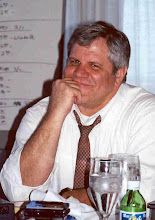As the Swiss painfully discovered, creativity is a crucial element in business. In fact, creativity can vanquish even the best innovations.
Time travel with me. Chicago, August of 1947. There were few things in life better than sitting at the local soda fountain with an ice-cold Coca Cola. Everything was white tile and light grey formica. It radiated cool. And those glorious overhead fans created a breeze that made the city sweat and grime just float right off you, which is exactly why soda fountains were the #1 outlet for soft drinks at one time. And Coca Cola ruled the roost. The other 29 brands of cola didn’t stand a chance; Coke kept adding new ways to handle and dispense cola, and new ways to serve it (fraps, frizzes, floats, swirls, etc.): in short – an innovation a week.
Then Alfred Steele read an article in Popular Mechanics or some such magazine, and turned Pepsi Cola from just one more no-name brand into the number one contender in 1948 by walking away from soda fountains. He handed Coke a virtual monopoly in the #1 retail channel of the day and instead used his meager resources to go after grocery stores with a vengeance. Coke laughed all the way to the bank – laughed, that is, until America performed its mass migration to the suburbs 18 months later. Suddenly America started buying its cola from an entirely new location – suburban grocery stores – and Pepsi had the shelf space locked up when Coke came knocking. And by 1958, America stopped going to soda fountains altogether – because they all had new fangled air conditioners hanging in their windows, and ice cold Pepsi in the fridge. Al had jumped the wall and run a deep post pattern in the meadow. You see, he’d read about Levitt Town and several other sub-urban housing projects. And he’d read about air conditioning too. Then he just put 2 and 2 together and took the enormous risk of betting the farm on his educated guess.
Creativity is the common thread running through all these examples. It is the source of competitive advantage, and therefore profits. It is also the thing that makes those examples memorable and gives us the "gee whiz" and "by golly" response as we read them. Creativity is the fuel that drives the engine of industry; finding new markets and ways to exploit old ones, developing new products and delivery systems, formulating new pricing and financing options, and addressing the needs and wants of buyers with data and images that touch the heart as well as the mind.
Yet a Presidential blue-ribbon commission published a very disturbing conclusion in the mid-80's. It said, unequivocally, that the U.S. economy was characterized as a vast sea of risk-averse mediocrity dotted infrequently with sparsely distributed islands of innovation.1 Yikes! No wonder the Japanese were doing so well back in the 80’s. They didn't have much competition.
In fact, they were kicking America’s butt from one end of the marketplace to the other. They had taken a huge chunk of the auto market, obliterated the U.S. in electronics and were making enormous strides in every field they entered. The balance of trade flipped as US consumers clamored for Japanese goods – because they were better in every respect – better designed, better constructed, and sold at a cheaper price – despite being shipped all the way from Japan. Meanwhile, Jimmy Carter was running around the White House in a sweater, turning down thermostats and turning off lights. And the best we could do was demand that each other “buy American” so that …… well, so that we could continue to churn out even more substandard stuff.
Things got so bad in fact, that Japanese officials felt secure enough to start taking pot shots. Akio Morita, the co-founder of Sony and co-author of The Japan That Can Say No, said "Real business entails adding value to things by adding knowledge to them, but America is steadily forgetting this. ... America no longer makes things, it only takes pleasure in making profits from moving money around."2 When your competitors feel secure enough to be condescending, you know you've got a problem.
I only mention this ancient history from the 80’s to point out a central point. They were saying the same damn things on April 20, 2009. And they were just as true. You see, there are creativity cycles, just as there are economic cycles. In fact, I suspect that one causes the other. But that’s a topic for Thomas Freidman or Malcom Gladwell to research.
I’ll move on by simply noting that it's easy to criticize. The hard part is fixing the problem. This blog is an attempt to do just that. So let's leave any further hand-wringing to those who have no idea where to go from here. Our focus will be on the future, and the past will enter primarily as a launch pad for taking the next step.
© 2009 Joe Anderson



